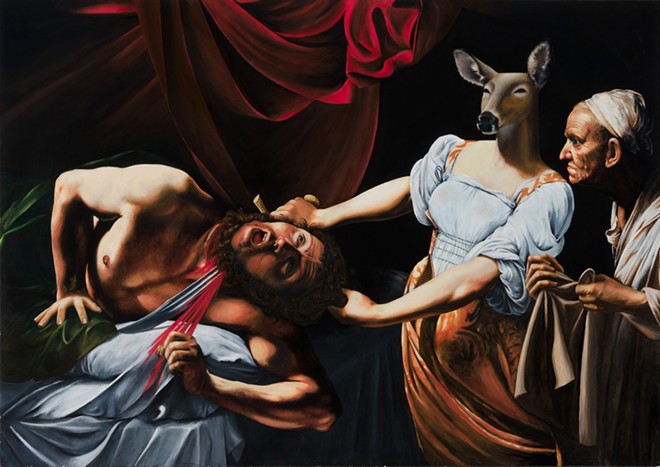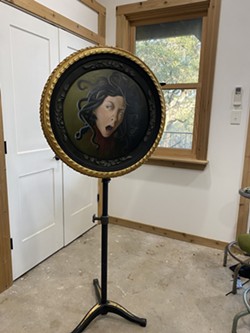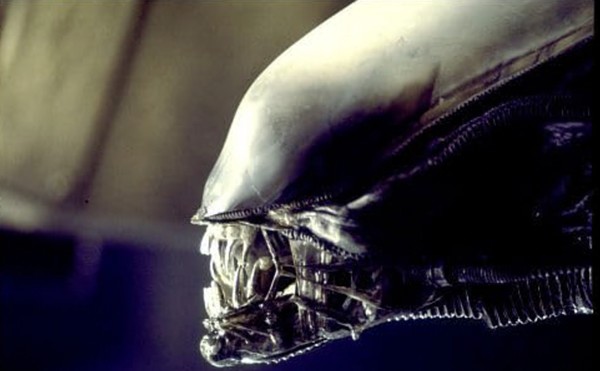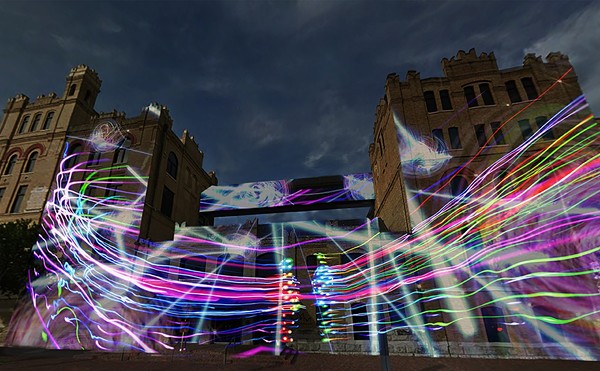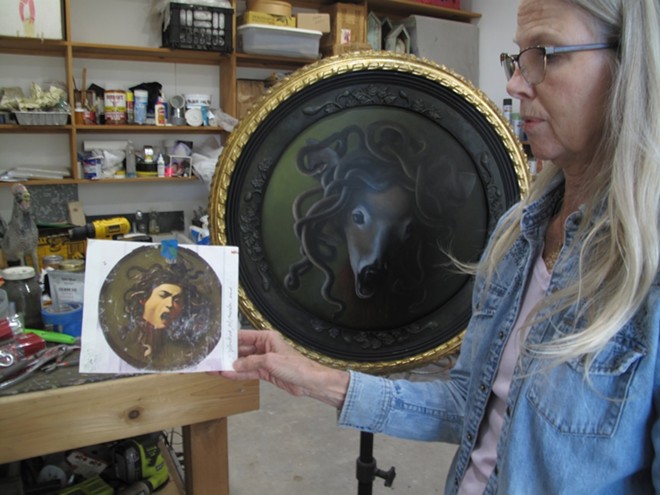
Sitting on the studio floor with its back tilted against the wall, Judith Beheading Holofernes (After Caravaggio) offers a grotesque yet darkly humorous insight into the art of Meg Langhorne.
The San Antonio artist altered the Baroque masterpiece depicting the biblical tale of the beheading of an Assyrian general by replacing Judith's head with that of a doe. Captured midway through the act, the doe is serene to the point of narcotic ambivalence. The glassy-eyed animal's lack of expression contrasts with the contorted faces of the terrified Holofernes and the malevolent jeer of Judith's crone-like maid, who seems overtly eager to stuff the invader's freshly severed head into an outstretched sack.
The work is part of Langhorne's ongoing series After Caravaggio, which also includes alterations of the Baroque painter's versions of Bacchus, The Incredulity of Saint Thomas and Medusa, among others. Langhorne grew up in Dallas and first became fascinated with the Italian master as a grad student at the University of North Texas. After graduating she moved around a bit, first to downtown San Antonio, then Austin and back to San Antonio, finally settling down in the early '90s on a plot with an idyllic 100-year-old cottage just outside Helotes.
Langhorne's comfortable two-story studio was completed in the late 2000s. The modest space in a bucolic setting belies the aesthetic oddities contained within.
Judging from the work on both floors of her work area, Langhorne's interest in Caravaggio hasn't waned. Just the same, it's been a frequent point of contention.
"People have questioned me as to why I didn't choose Artemisia Gentileschi as a starting point for this series," Langhorne said. "She just seems too obvious. She's unrepentant — as was Caravaggio's Judith — and for good reason."
Artemisia was a woman who painted as an individual at a time when such a practice was all but unheard of, and she's still considered an anomaly for her time. Caravaggio was much more problematic, not just as an artist but as a human being. His open affairs with men while simultaneously accepting the patronage of the Roman Catholic Church, his unpredictable and psychotic public episodes — not to mention the taking of a life in a duel and living on the lam for the last few years of his short life — all make him the perfectly flawed sort of genius to harness for Langhorne's distortions.
"I want to engage the viewer, not confront them or beat them over the head with my agenda," she explained. "Why use baseball bat when a feather will do?"
In Medusa (After Caravaggio), Langhorne uses her own face as the basis for the historically maligned, beheaded Gorgon. The flip side of the piece features a doe with the same mane of snakes for hair. However, Langhorne insists that the Gorgon and the doe aren't antithetical. Nor is the doe the anthropomorphic representation of a woman in peril: she's a surrogate.
"Women in our society are treated as non-persons — like animals, like prey. We are persona non grata," Langhorne said. "The myth of Medusa is a perfect example of this. She was a maiden — a priestess — until Poseidon raped her in Athena's temple. For the crime of being defiled on sacred ground, Athena turned that girl into a monster, with snakes for hair and a gaze that turned men into stone. She sent Perseus to decapitate Medusa and bring back the severed head. Talk about blaming the victim."
She added: "After all these years, I'm still enraged about men making decisions about women and their bodies."
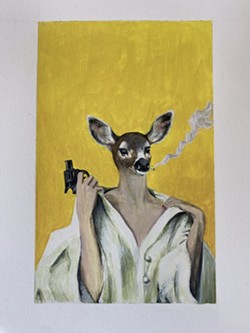
Langhorne has applied that rage not just to reworking classical paintings. Her "bodice buster" series was the first to use the doe as surrogate for the male gaze. Each piece in the series is a reworking of the cover of a cheesy '60s or '70s romance novel, with the doe being sexually overcome by her own carnal desires. Hilarious to view, the series acts as a bridge between Langhorne's interests in antiquity and pop culture. Our stony-eyed heroine is finally evolving into a femme fatale.
Langhorne's latest series of gouache-on-board paintings reimagines the covers of '50s pulp detective novels. The doe now packs a revolver.
Together, the victim and the vixen represent a duality that the artist considers flip sides of the same coin, even interdependent in terms of representation. Like Caravaggio, Langhorne is both a dramatist and naturalist. However, unlike the Italian painter, she's not a lunatic.
Recently retired, she spends all of her free time working on things that please or anger her — or both.
Subscribe to SA Current newsletters.
Follow us: Apple News | Google News | NewsBreak | Reddit | Instagram | Facebook | Twitter| Or sign up for our RSS Feed

